Green woodworking – beautuful stools, chairs, tables, bowls, spoons and kitchen utensils. What’s not to like? ‘Price’ is what some of you might be saying, and this is a topic we’re going to be coming back to again and again. Price is the stumbling block that is pushing us towards a world of low-quality goods, sweatshops, environmental damage, breakdown of community and unemployment – and away from a world of high-quality goods, craft production, sustainability, short supply chains and vibrant communities.
We believe that the solution is a move to a largely (where possible) community-based economy, and thinking of yourself as a producer as well as a consumer – receiving and paying good prices for sustainable, quality products. We have lots of ideas about how this can be achieved, and we’ll be blogging more about it over the coming months. Meanwhile, here’s Robin of ‘Treewright’.
I’ve been experimenting in the workshop using two different timbers on one product.
So various experiments with left over pieces of wood that are too short to be useful on their own but used together have added a great dynamic to my range of utensils. I have lots chunks left over from billets when I’ve been pole lathe turning, log ends when I’ve been getting rid of splits and bits that ‘might just come in useful’ all of which, in the past would have been burnt on the log burner. The citrus juicers worked brilliantly, the one below is has an Apple handle and Sycamore head.

This one is a re-claimed Walnut (shelf and the remains of a cupboard from a skip – how it ended up like that I just can’t guess) handle and Sycamore head.
The trickiest part is re-aligning the centres. so you get a good equal looking perfect join where one timber meets the other. I need all my products to look immaculate.

Here’s one of my new Rolling Pins.

This one is Ripple Sycamore from Yorkshire with some Apple found in a car park in Epping Forest dumped by some dodgy waste clearance vandals along with builders rubble, redundant bathroom fittings and other household crap. I’ve accentuated the join here with friction burn lines and it gives the traditional rolling pin a more contemporary look.
I’ve found using different coloured wood most satisfying, makes everything look fresh and is eye catching when amongst a plentiful array of kitchen utensils. During the lock-up I’ve had 90% of my on-line sales for culinary wares and I’m hard pushed to keep my stock levels up. For a couple of weeks I thought I’d become a specialist Spurtle (porridge-stirrer) turner as they were selling like hot cakes and I couldn’t make them quickly enough to meet demand. I know some turners have very set patterns and knock things out in a matter of minutes but every single thing I make is a new design in itself and takes time and thought. I know I say ‘I just go with the flow and make what the wood tells me’ but it’s much more than that – yes the wood does speak in it’s own mysterious way and that meets somewhere half way with my artistic mind to produce that unique item that can be recognised at a glance as something special.
The main image at the top is a selection of my turning and carving from recent weeks in the workshop. The Butter Knife with the striking stripe is from some Damson branchwood from the Abbey Gardens in Waltham Abbey and absolutely outstanding, not just visually but from a carving point of view – a lovely wood to work with as long as your tools are superdooper sharp. Same goes for carving the juicers, it’s great when you get those lovely curls of wood coming from your gouge and I love the star that forms at the business end when you get them perfect – great for keeping the pips in the in the bottom of the skins…
NB: turning as thin as you dare – waste of time and wood – in my opinion!
This is something, as a turner and daily user, I’m not terribly fond of – it’s just not practical from a usage point of view. I believe tableware should be robust, fit for use and beautiful. I want my products to last a lifetime if at all possible and not to be turned so thin that they become delicate fragile only to be looked at and certainly not really meant to be used! If I say it’s suitable for everyday use I mean it – if a two year old takes it into their head to chuck it onto the tiled floor in disgust it should live to see another day – not crack at the first whack but live again with it’s badges of honour, wear and tear, and be around for their child to use a generation later having gained a few dents and a wonderful patina of living a full and rewarding life as a bowl.
This doesn’t mean that I can’t turn a thin bowl but I am reluctant to do so for the above reasons. I often see turners showing their skills by holding a light bulb to the inside or outside so you can see the light. Well I’m not making a blooming lampshade am I – I’m making a useful bowl that won’t crack, chip, leak or fall over. The same can be said of hand carved spoons. There is a movement to make them so thin you could almost bite a mouthful of wood from the bowl with you broth – not my idea of a fully functioning spoon. I’m all for great design, elegant appearance that should be strong, robust and last a lifetime brigade.

So here’s a Porringer or Bowl I did turn thin and how I wish I hadn’t! It’s so frustrating, I really enjoyed the main turning and then I thought right I’m going to mess around again with making the wood really thin which looks good and makes it very lightweight but not as practical as it could be. I did leave the rim thicker and it has the handles which obviously means it has a greater inherent strength but I always think one rough fall to a marble floor and the bowl could crack or the wood is so thin the broth could soak through, so not ideal. However I do like it’s lines and I’ve left the tooling marks where I’ve carved the rim – it looks purposeful and I’m marketing it as a snack or sweets bowl! This is Sycamore from the edge of the Abbey Gardens that came down when we had a big blow in early January and has the most amazing silvery sheen in the grain – very beautiful…
I ship all my wares world wide and you can find them here in my shop

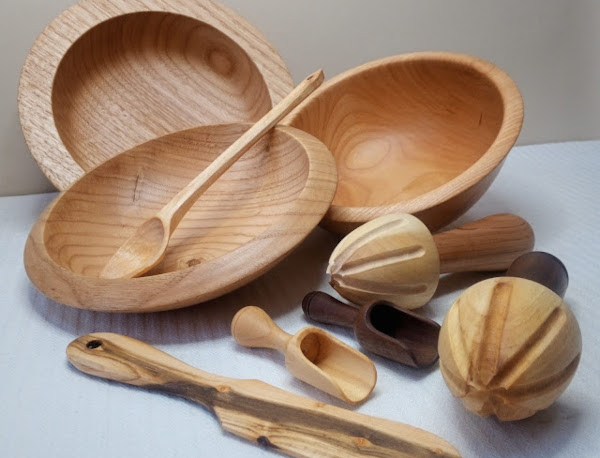
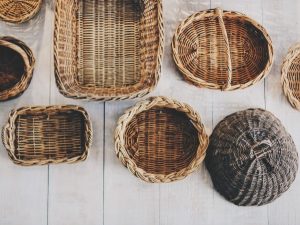


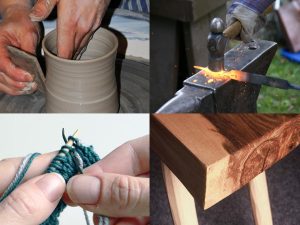

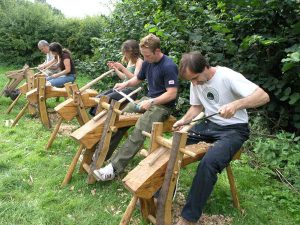
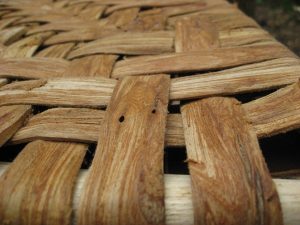
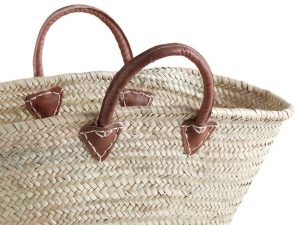


2 Comments
This all very interesting but nowhere have you mentioned if your experiment has lowered the price of goods to an affordable price for most people. I am on a pension we are not all on an index linked pension or on a high enough wage to afford to pay out for these wonderful products I love turned wood and I understand that the hours you put in should be paid for but most people will see these things as elitist as so many green things are. perhaps if prices were more affordable you would make more money but of course this may not be your driving force just the love of working with wood which i can understand. I love the fact that so many of the old crafts are coming back and that you recycle a lot of wood for the things you make, I would if I could afford beautiful things like this would buy nothing else.
annbeirneanimalwhisperert – I think this is the biggest issue around every kind of socially just or sustainable production. I promise that we’ll be blogging a lot more about it in the coming months, and yes, I think our mutual credit experiment can help in this respect. Here are some of the main points:
1. the prices of craft products and clothes, locally-produced organic food etc. are actually the real prices of products, clothes and food. The reason those things have become so cheap in the corporate economy is because they’re produced using sweatshops and unsustainable production methods.
2. craft producers and organic smallholders aren’t becoming rich – they don’t charge those prices to exploit people or make lots of money – they charge those prices to cover their material costs and labour, without exploiting workers or damaging the environment.
3. if communities unite around trading clubs that encourage and invest in the development of local businesses, more people can become producers as well as consumers, receiving as well as paying higher prices.
4. communities will have to make provision for pensioners or others who can’t become producers for some reason, based around proper social care, via co-ops (https://www.lowimpact.org/national-network-social-care-co-ops-graham-mitchell-part-2/); plus stronger communities can, and hopefully will support their older residents via local gift economies or funds (maybe generated from transaction fees from local mutual credit networks – who knows?) that allow pensioners to purchase locally-produced goods and food at discounted rates.
5. quality goods are usually more durable and therefore last longer, and so in some cases can turn out to be a similar price to lower-quality goods in the long run